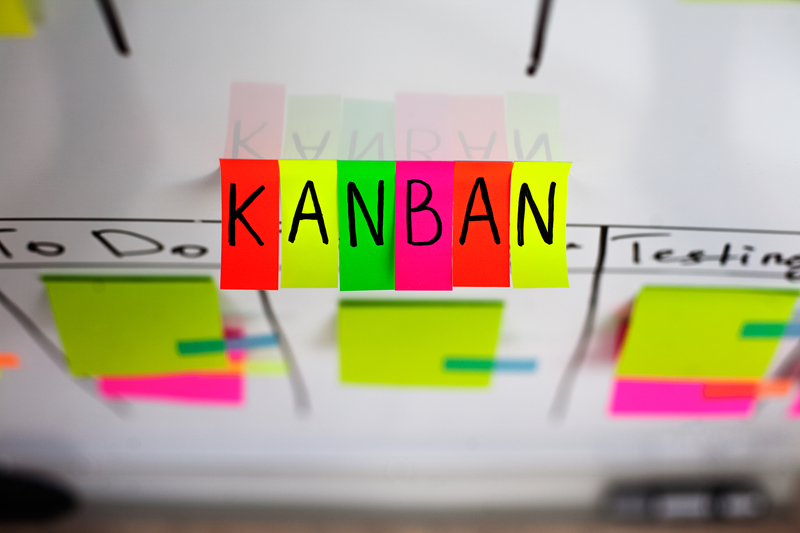
The main objectives of TPS (Toyota Production System) are to design out overburden (muri) and inconsistency (mura), and to eliminate waste (muda). The most significant effects on process value delivery are achieved by designing a process capable of delivering the required results smoothly; by designing out mura. It is crucial to ensure that the process is as flexible as necessary without stress or muri, since this generates muda. The tactical improvements of waste reduction or the elimination of muda are very valuable. There are eight kinds of muda that are addressed:
- Waste of overproduction (largest waste)
- Waste of time on hand (waiting)
- Waste of transportation
- Waste of processing itself
- Waste of stock at hand
- Waste of movement
- Waste of making defective products
- Waste of underutilized workers
Kanban is a method for managing knowledge work, which balances demands for work with the available capacity for new work. Work items are visualized to give participants a view of progress and process, from task definition to customer delivery. Team members “pull” work as capacity permits, rather than work being “pushed” into the process when requested.
In software development, for example, Kanban provides a visual process management system which aids decision-making about what, when and how much to produce.
The elimination of waste has come to dominate the thinking of many when they look at the effects of TPS because it is the most familiar of the three to implement. In TPS many initiatives are triggered by inconsistency or over-run reduction which drives out waste without specific focus on its reduction.
Enjoy this informative video on TPS and Kanban.








No responses / comments so far.